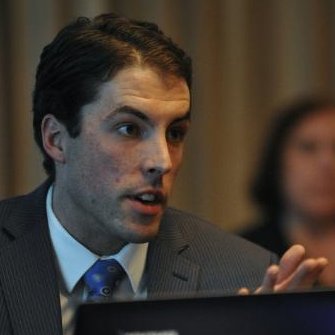Roughly two years after the homicides of two students prompted a congressional review of Job Corps, federal lawmakers continue to probe for answers about safety in its training centers and its funding may be cut.
The $1.6 billion federally funded program, the nation’s largest for residential education and employment, aims to give nearly 50,000 low-income teenagers free vocational training.

Virginia Foxx
Systematic safety-related weaknesses flagged in audits over the last 10 years have muddied the program’s reputation and raised questions about its future, according to critics like Republican Rep. Virginia Foxx of North Carolina, chairwoman of a House committee evaluating the program’s future. The program’s inability to create a secure environment for vulnerable youth indicates it has yet to fulfill its core mission of helping disadvantaged youth, she said.
“The fact that there have been nine student deaths since 2015 is incredibly disturbing. And the fact that the program has failed to incorporate many of the inspector general’s recommendations related to student safety is unacceptable,” Foxx said.
At a June hearing before the House Education and Workforce Committee, Larry Turner, the Labor Department’s deputy inspector general, said Job Corps staff at 11 centers visited failed to report potential serious criminal misconduct to law enforcement in nearly 40 percent of the 348 serious incidents reviewed. Turner also found serious lapses in the physical security of 12 centers visited, such as limited security staff, compromised perimeters and inconsistent procedures for staff background checks.
Job Corps, a relic of President Lyndon Johnson’s war on poverty, has been beset by safety concerns for years. The program provides a wide of array of services, including housing, meals, instruction and job training, to youth between 16 and 24 who have an additional barrier to education and employment such as homelessness or enrollment in foster care. Businesses, nonprofit organizations and Native American tribes run 99 of the 125 centers.
Thousands of safety incidents
A June report by the department’s Office of the Inspector General (OIG) found Job Corps’ staff reported 49,836 safety incidents, most of which involved serious illnesses or injuries, assaults and drugs between Jan. 1, 2007 and June 30, 2016. Over the same time period, centers reported 265 deaths, most of which were due to homicides, medical issues and accidental causes, according to the report.
More than three-quarters of the reported incidents happened onsite at Job Corps centers; the rest off-site, according to the report. Of the 265 reported deaths, 77 percent occurred off-site and 23 percent on-site. (Job Corps is only responsible for offsite incidents that involve supervised activities, even though it’s required to report all offsite deaths, said Cindy Brown Barnes, a team director at the U.S. Government Accountability Office.)
Spokespersons from the U.S. Department of Labor, which oversees the program, did not respond to multiple requests for comment.
Greg Roberts, executive director of the National Job Corps Association, a professional trade organization, said the program is “aggressively” working to boost safety and security in 20 centers with improved camera and monitoring systems and more stringent prescreening tools.
“We’re implementing a zero tolerance program so that if there are young people who do break the rules and regulations, there’s no tolerance. We remove them from the program,” he said.
Others say the organizational structure of the program, which relies on multiple contractors nationwide, makes it challenging to implement consistent policies.

Thomas Showalter
“It seems coverage suggests Job Corps is this monolith with safety issues and that outcomes are down, when really, it’s all of these different contractors — from extremely rural ones run by the USDA to larger programs. It’s such a diverse ecosystem of programs,” said Thomas Showalter, director of the National Employment Coalition, a nonprofit organization that aims to improve the lives of youth who are out of school and not working.
It’s unclear how unsafe students in Job Corps are compared to other youth, according to Jeff Barton, academy director of the Earle C. Clements Job Corps Academy in Morganfield, Kentucky.
At a House hearing in June, Barton noted students in Job Corps were 15 times safer on their sites than their peers nationwide. He said the deaths of two students in 2015, however alarming and concerning, were not representative of Job Corps’ overall record with respect to safety.
Laporche Bell, a graduate of Gary Job Corps in Marcos, Texas, says safety concerns should not overshadow the program’s reputation.
“As horrific as this is, I still think the taxpayers’ money is being put to good use. The first two months of Job Corps, we are given over 200 hours of classes and speeches from staff and student leaders on how to be safe. We are given instructions on who to voice our safety concerns to. Not only that, we have afternoon meetings in our dorm about extortions and debts being prohibited on the facility,” she said.
The program’s legislative future remains uncertain. President Donald Trump has proposed a $238 million cut to the program.
Foxx said the committee is examining the root causes behind safety lapses before making recommendations about the program’s future.
“We need more information in order to make proper recommendations related to the program’s future. It’s our hope that the department will take steps to improve student safety so more young people can prepare for the workforce in a positive and secure environment,” she said.
Roberts said he is confident the program will continue to improve its safety. He plans to hire more people who have graduated from Job Corps and partner with juvenile justice reform organizations in order to create a leadership structure driven by youth.
“We’ve got a tremendous responsibility because sometimes we’re the last choice and the last opportunity for these young people,” he said.






























